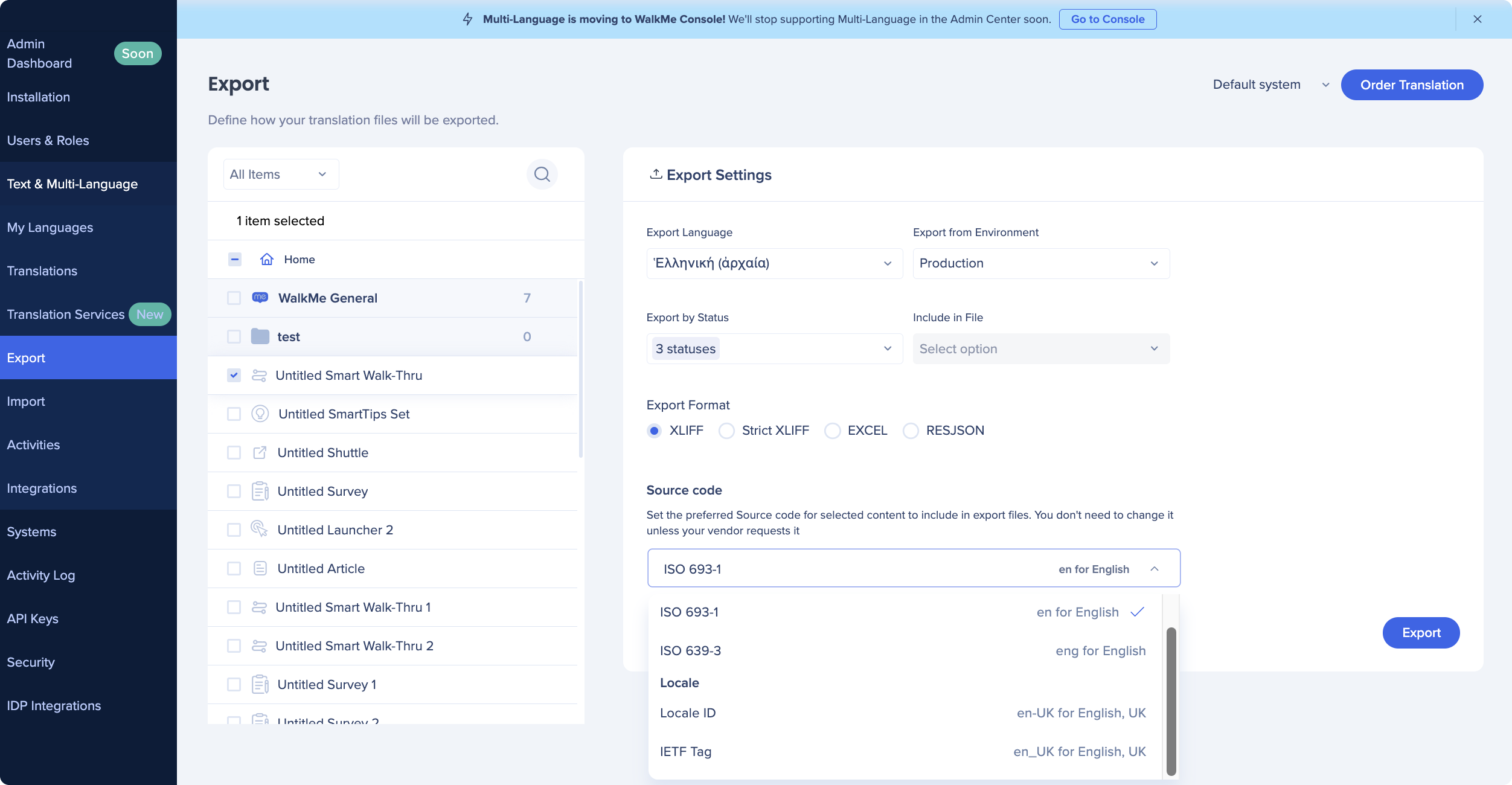Multi-Language ISO Standard
Brief Overview
The ISO (International Organization for Standardization) standard establishes a unified code system for identifying languages. Until now, we didn't have such a system at WalkMe, which demanded extra actions from the user and caused issues. Now we've had the ISO standard implemented.
This article covers the benefits of the ISO standard, how it works and how it alleviates various pain points experienced by our users.
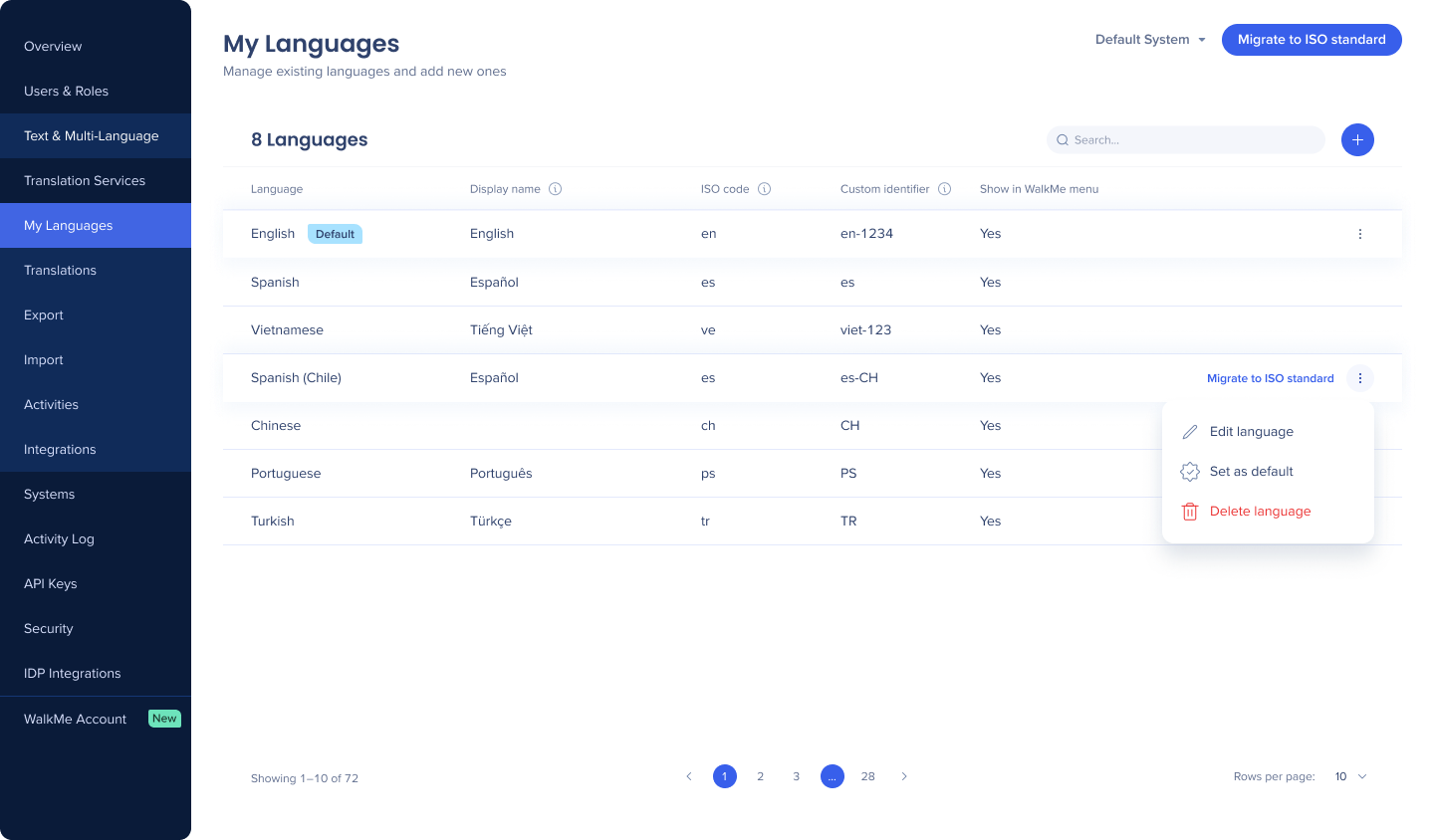
Benefits of the ISO Standard Implementation
- Simplified User Experience: Implementation of the ISO standard will automate the language identification process and eliminate the need for manual investigation from the users.
- Smooth Integrations: Aligning the language codes with third-party companies using the ISO standard eliminates compatibility issues.
- Improved Automation: Synchronization of the translations from system creation to the final translated content (between application language, translation service language, and WalkMe language).
- Dialect Support: The ISO standard provides a global language code framework, making it easier for us to support different dialects.
How to Use
My Languages
In My Languages section of the Text & Multi-Language in the Admin Center, user will be able to migrate to the ISO standard. A button will appear next to the languages which are not using ISO standard codes, as well as a button in the top right corner of the screen. When clicked, it will offer user to select languages they'd like to have migrated to the ISO standard.
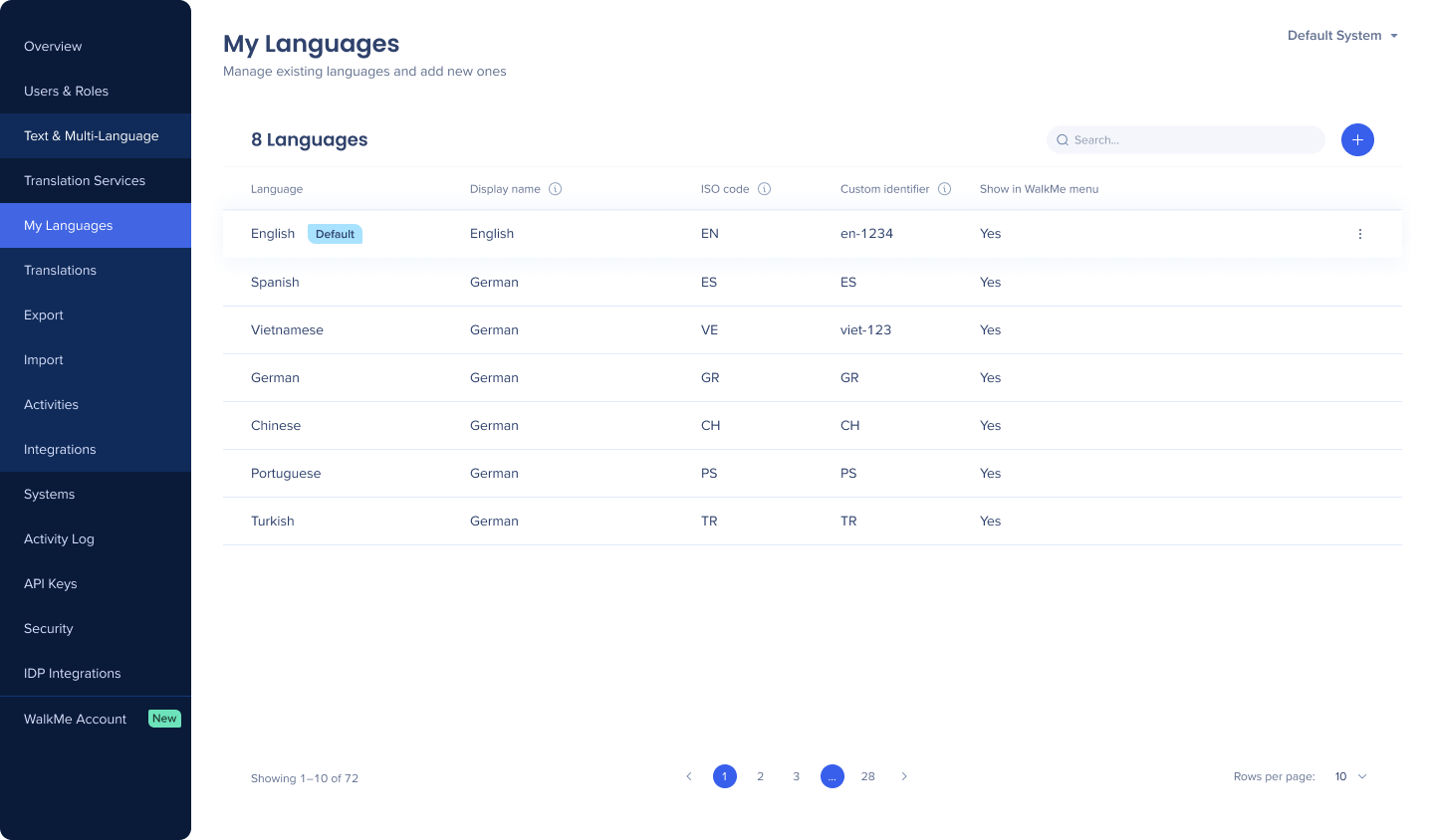
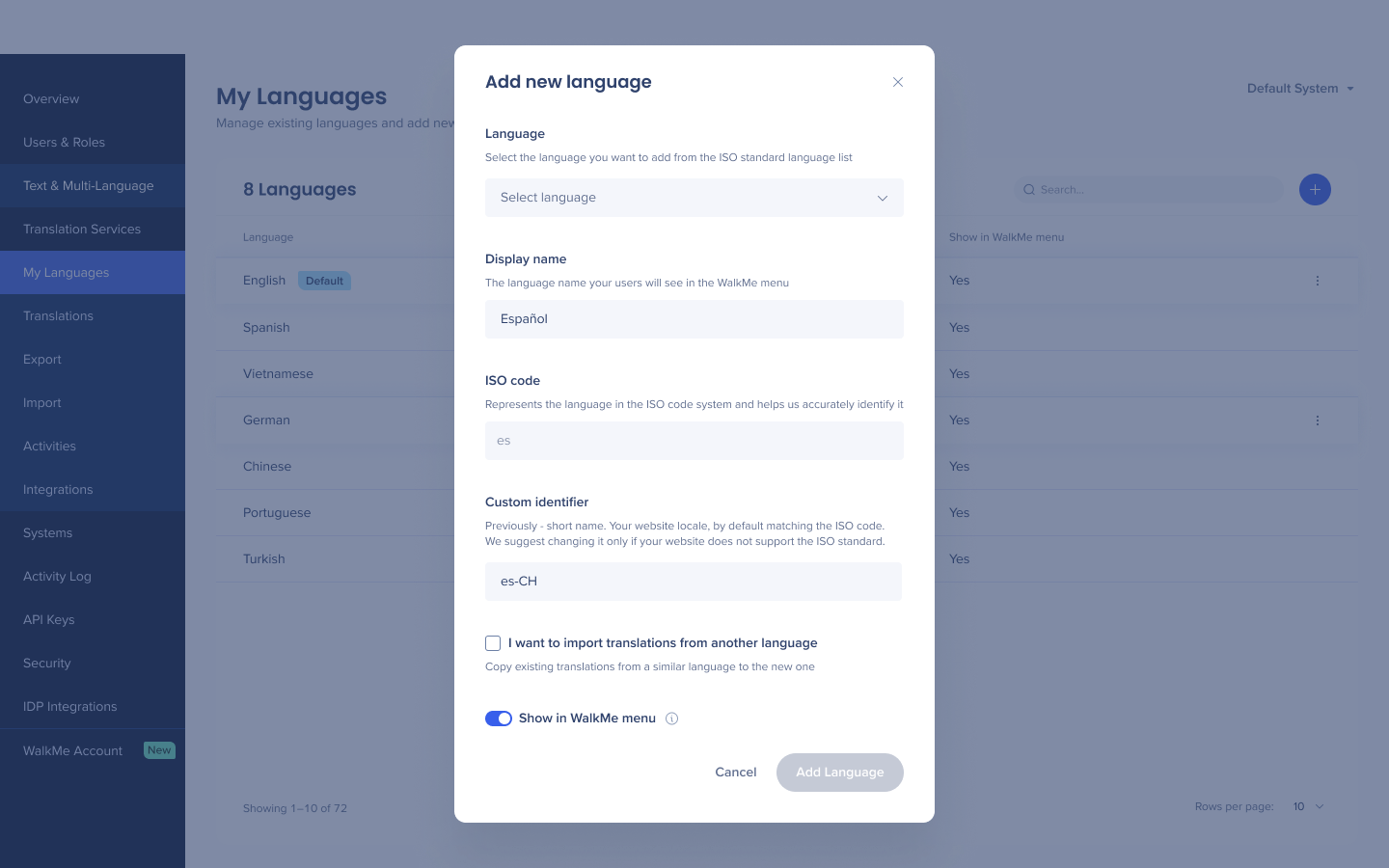
Adding New Language
When adding a new language, users will be prompted to select their desired language from the ISO standard language list.
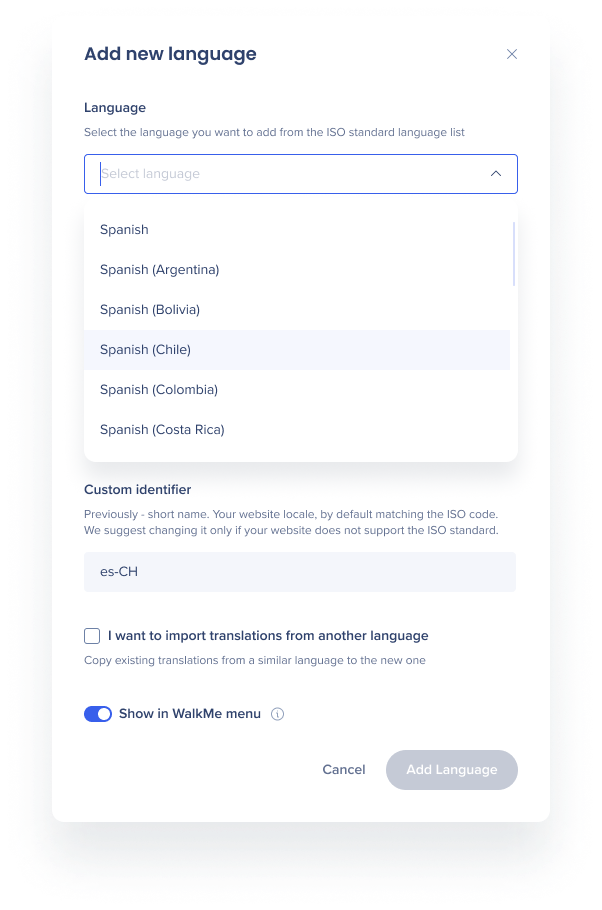
Once the language is selected, the corresponding language code will be automatically added based on the ISO standard.
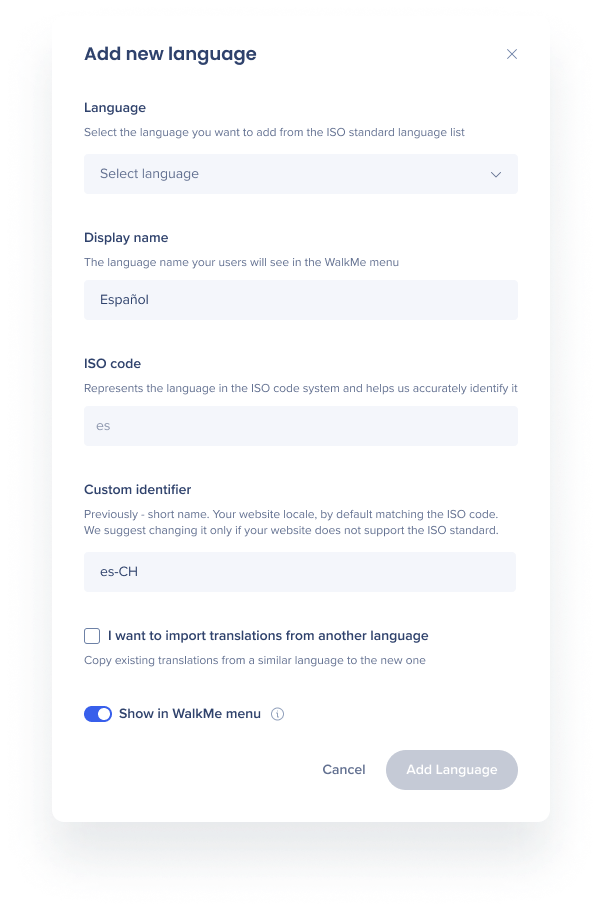
If the user modifies the code to a customized one, a button will appear suggesting a switch to the Locale (ISO code).
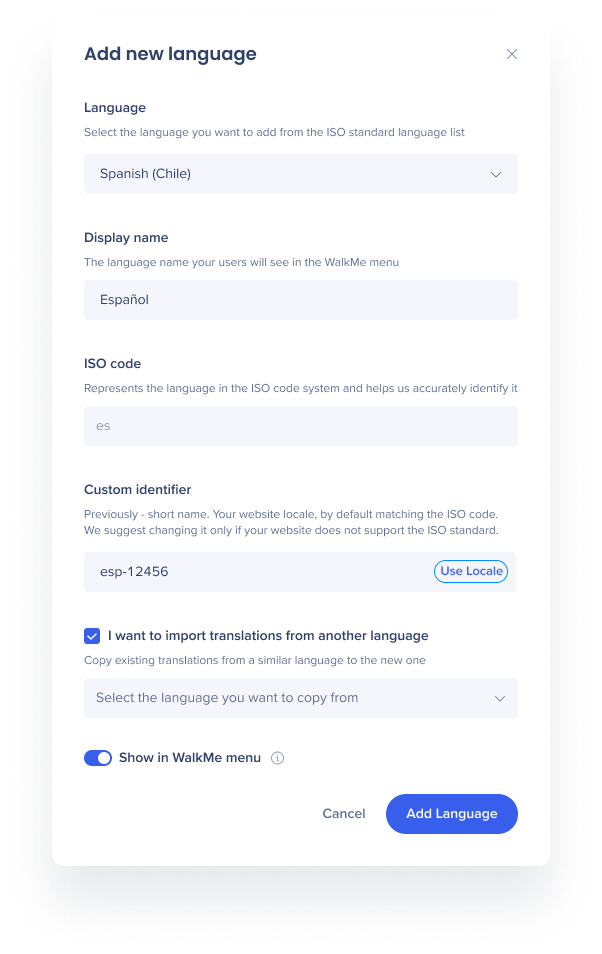
Editing a Language
When the user edits a language that does not have any existing content, they will have the option to import translations from another language in the same manner as when creating a new language.
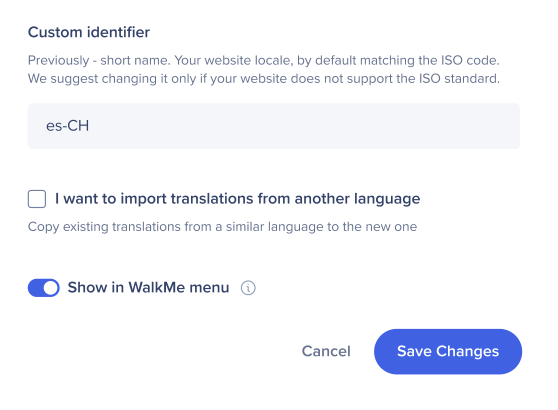
When the user edits a language that already contains content, the import option will not be available. Instead, the user will see a note explaining how to utilize the import option.
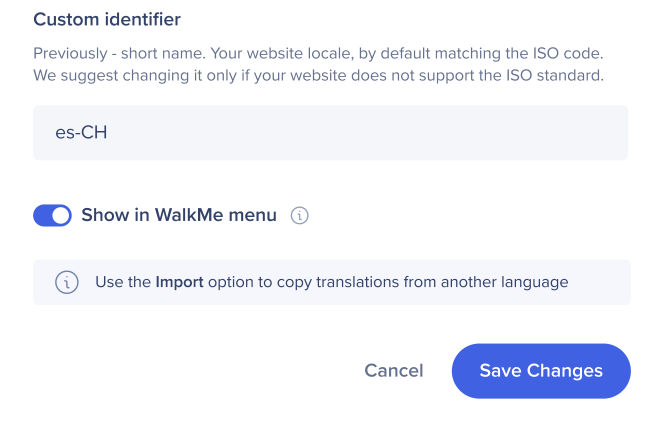
If a user edits a language with a name that does not conform to the ISO standard, a warning message will appear, suggesting a switch to the ISO standard. The message will disappear once the user selects the language from the ISO standard list.
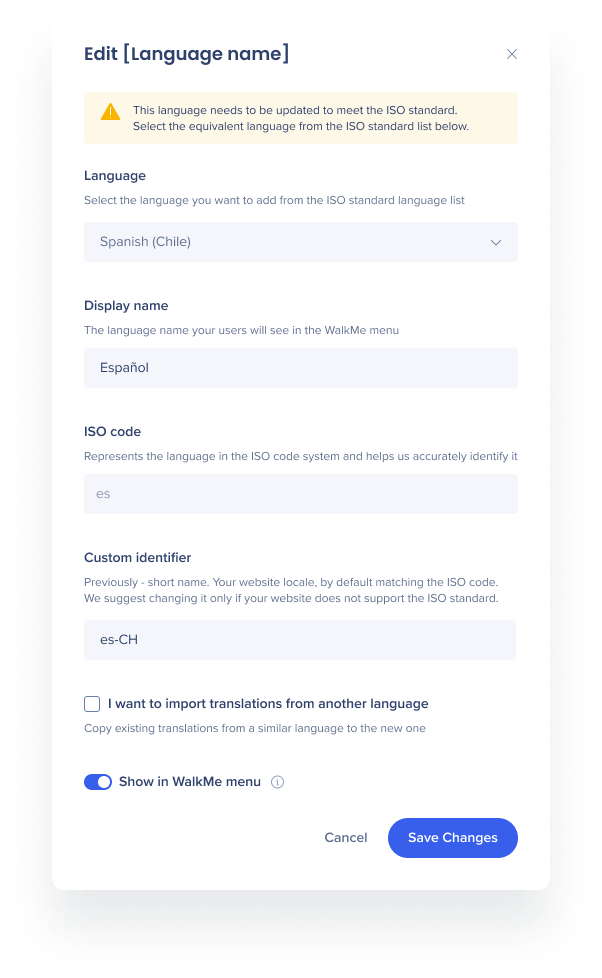
ISO Code for Default Language (new)
- There's now the ability to update the language name and ISO code for the default language
- Once a user sets the default language, it will effect the Export page
- Customer will be able to select the code format they wish to use in the export functionality (ISO 639-1, ISO 639-3 or Locale)
